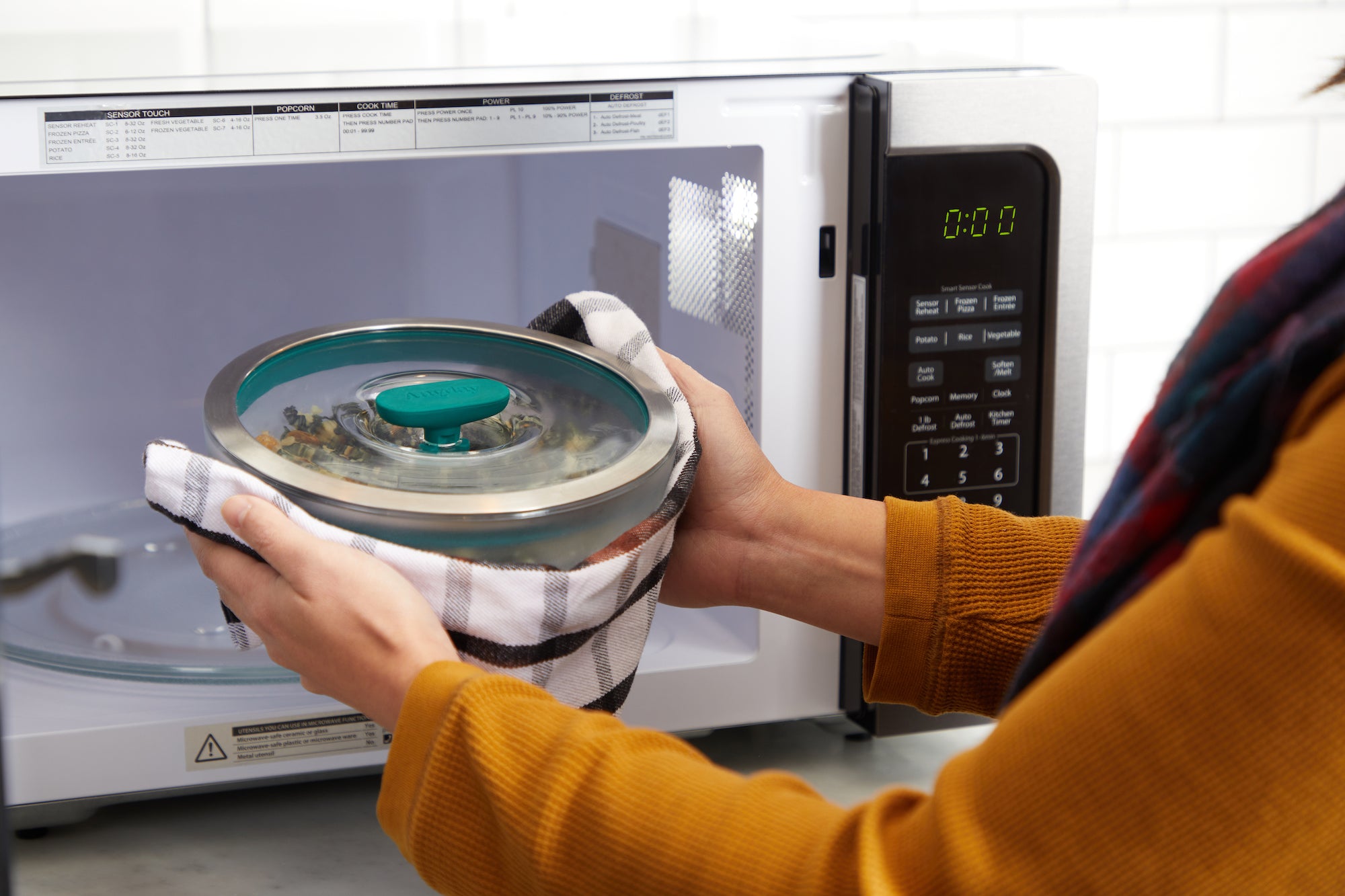Have you ever heard people say, “microwaves emit harmful radiation!” (they don’t!) and “your microwave will kill all your food’s nutrients!” (it’s actually the opposite!)? Fun fact: Those are all microwave myths! But there's one myth we’ve been hearing a lot: “Metal absolutely cannot go in the microwave. Ever.”
The crazy thing? All of Anyday's highly reviewed microwaveable dishes have metal on the lid. And it's all meant to go into the microwave.
So, is metal safe in the microwave?
Yes, some metal (including the Anyday lid!) is safe in the microwave!
We have surprising news: Some metal CAN go in the microwave! In fact, your microwave’s walls are metal and you might even have a metal shelf in there, too. We even designed Anyday’s lid to have a microwave-safe metal rim to help keep the tightly-sealing silicone ring in place.
But before you throw a metal bowl or spoon into the microwave, here are some facts to know about how metal behaves when you hit “start.”
What happens if you accidentally put metal in the microwave?
Let’s start with the basics: What causes sparks in the microwave? Fair warning: this might bring back memories of chemistry class.
All atoms are made up of particles called protons, neutrons, and electrons. Protons carry a positive charge, neutrons carry no charge, and electrons carry a negative charge. These three particles make up an atom.
Atoms naturally seek electrical neutrality, so when there isn’t a balance of negative and positive charge, electrons can jump around to find positive charges they can balance out. This is relevant because sparks are caused by electrons jumping through air.
So, what does this have to do with metal in the microwave?
Not all metal is safe in the microwave
Metal is not safe in the microwave if:
- There are multiple pieces of metal next to each other (like the tines of a fork)
- The metal has an extremely thin or sharp edge (aluminum foil, gold trim on tea cups or plates)
Let us explain.

Microwaves are electromagnetic waves that affect certain types of molecules they come into contact with. While water, fat, and sugar molecules are good at absorbing microwaves, the very surface of metal can be affected by these waves, too.
We’re about to get slightly even more scientific again for a second. Metals are made up of a tight knit network of atoms (think of a lattice), with loose electrons floating around them. Microwaves (the waves themselves, not the appliance!) attract the electrons in metal, which bounces the electrons around. When metal with super sharp edges or pointy angles that are right next to each other comes into contact with a microwave, the electrons are ping-ponged back and forth, which creates a concentration of negative charge. This makes the electrons a little claustrophobic, so they jump through the air to find more space and other atoms to bond with.
That’s what causes the spark — electrons forcing their way through air as they try to find positively-charged molecules to bond with to get back to equilibrium! When metal sparks in the microwave, this is called arcing.
When is metal safe in the microwave?
Metal generally reflects microwaves — that’s why the walls of microwaves are metal, so that the waves can bounce around inside and cook your food. Things that are smooth and thick are unlikely to arc, like a spoon or Anyday’s rounded rim on the lid. Microwaves also do not penetrate metal deeply — only a very, very small depth will heat up, and so thick metal will heat up slowly, and therefore will not burn or spark.
There is one caveat here — when you put smooth, thick metal in the microwave (like the rims of our lids!), make sure to give it some space from the walls of your microwave (they’re metal too, remember!). Even though the electrons are seamlessly moving through that metal, an opportunity to jump to other metal close by might result in some arcing.
So there you have it! That’s why Anyday’s lid that’s rimmed with metal is safe to be used in your microwave. And don’t skip using that lid — its steam-trapping ability is what makes Anyday so effective for cooking from-scratch delicious meals in the microwave.





Share:
What to Cook: Vegetables
Power Up (or Down): Everything You Need to Know About Using Your Microwave’s Power Levels